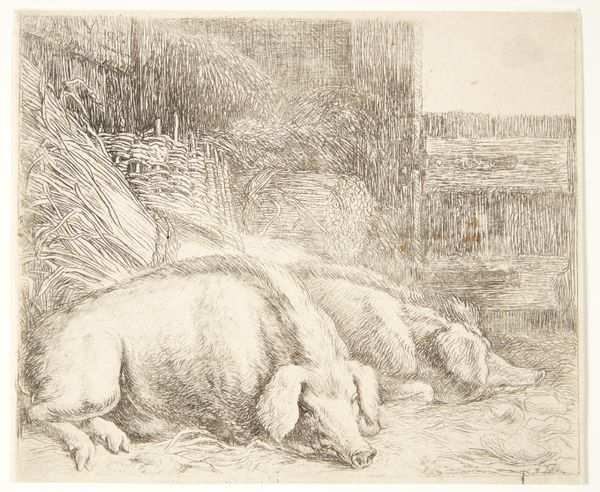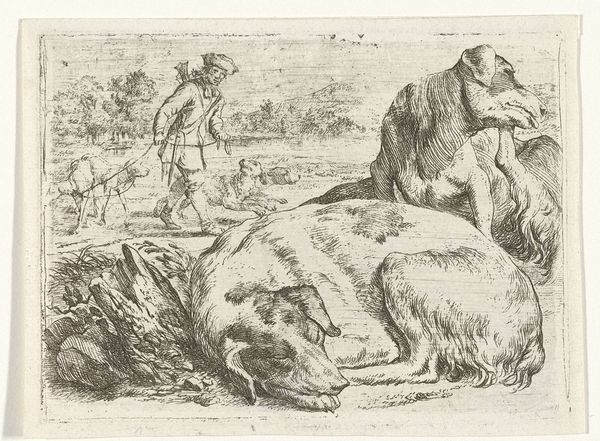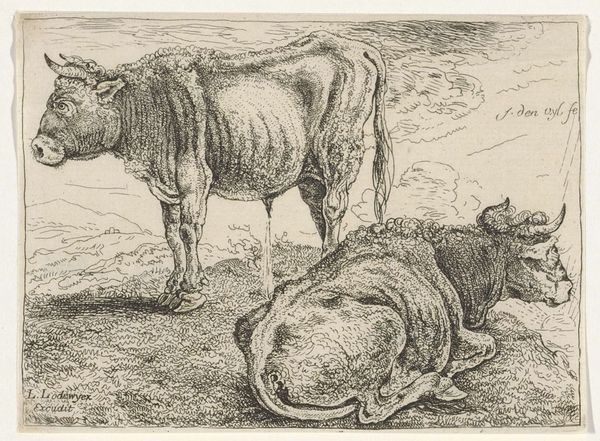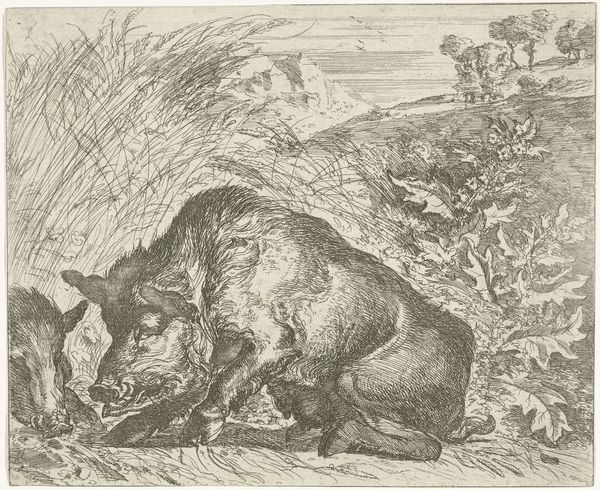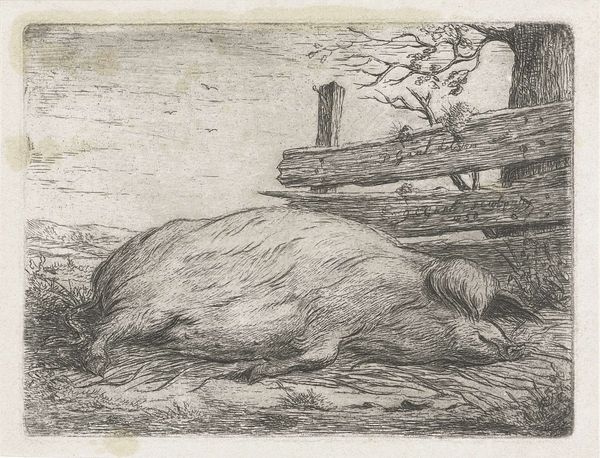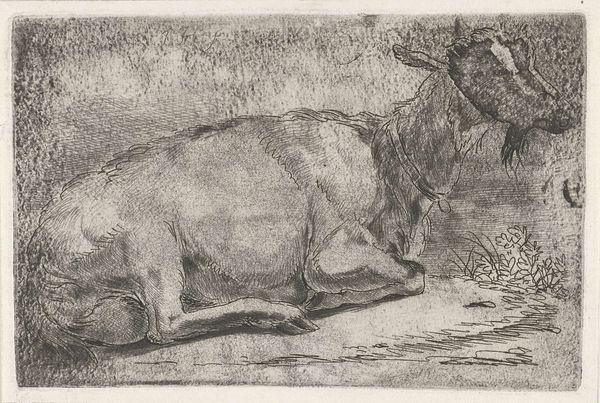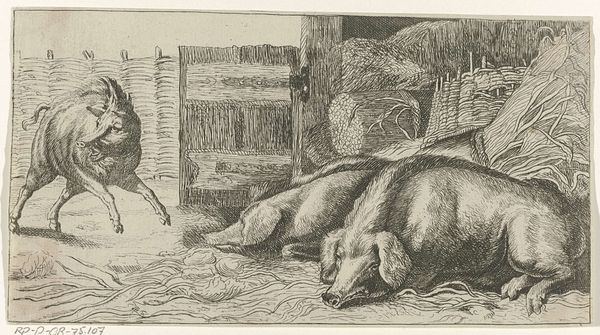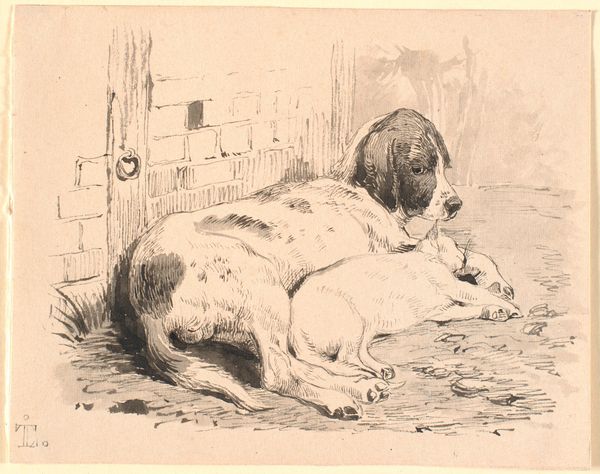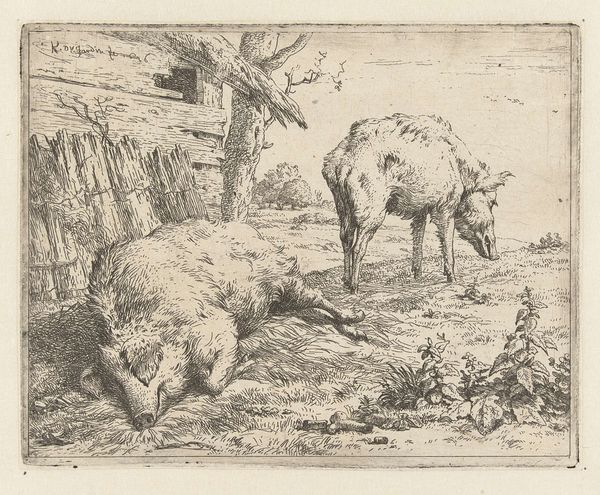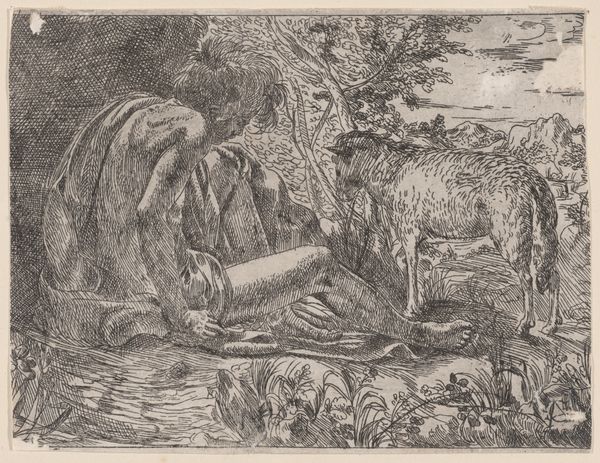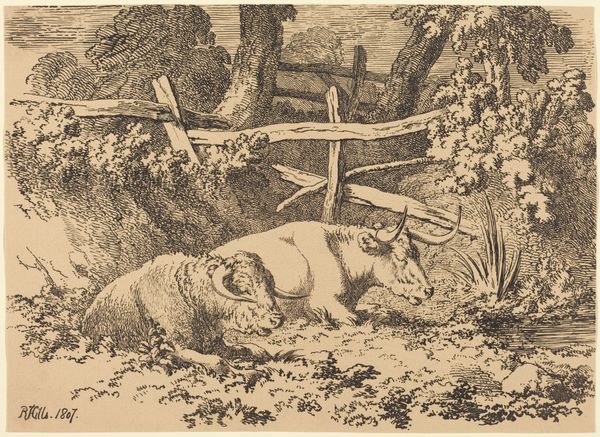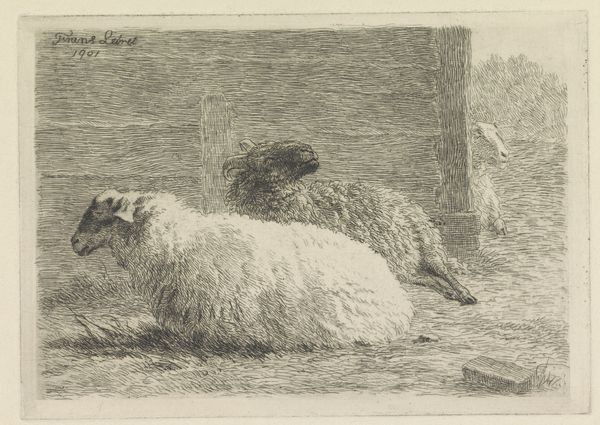
print, etching
#
animal
#
dutch-golden-age
# print
#
etching
#
landscape
#
form
#
line
#
genre-painting
#
realism
Dimensions: height 122 mm, width 150 mm
Copyright: Rijks Museum: Open Domain
Editor: This is "Two Pigs," an etching by Simon de Vlieger from the Dutch Golden Age, somewhere between 1610 and 1653. The crosshatching creates a real sense of depth, but the subject matter seems so ordinary. What can you tell me about this piece? Curator: "Ordinary" is a great starting point! It’s an intimate portrayal, isn’t it? Note how the pigs are composed. The artist chose a scene from everyday life and, through the precise detail, imbued it with meaning. Consider the cultural connotations of the pig in the 17th century, a symbol that fluctuates between prosperity and uncleanliness, abundance and gluttony. Editor: So, they were powerful symbols in Dutch culture? Curator: Yes, and depictions like this often appeared in genre paintings and prints, prompting viewers to contemplate those virtues and vices within their own lives and society. Do you think the artist is making a specific comment here? Editor: Well, they seem very relaxed. Almost idealized in their rest, undisturbed by any moral quandaries! Curator: Perhaps de Vlieger prompts us to consider the value of simplicity or a life lived outside societal pressures. What visual cues lead you to see the scene as restful and without conflict? Editor: It’s the quiet composition. The limited shading gives the scene a calm uniformity, but perhaps it’s naive to read it that way? Curator: Not at all! Remember that images are made to be read; de Vlieger invites you into this tranquil, and complex, moment. It serves as a great example of how seemingly simple scenes can trigger profound reflections about human values. Editor: That's fascinating! I’ll never look at a genre painting the same way. Curator: Precisely. Every detail, no matter how seemingly trivial, is charged with the weight of cultural meaning, waiting for us to unpack it.
Comments
No comments
Be the first to comment and join the conversation on the ultimate creative platform.
